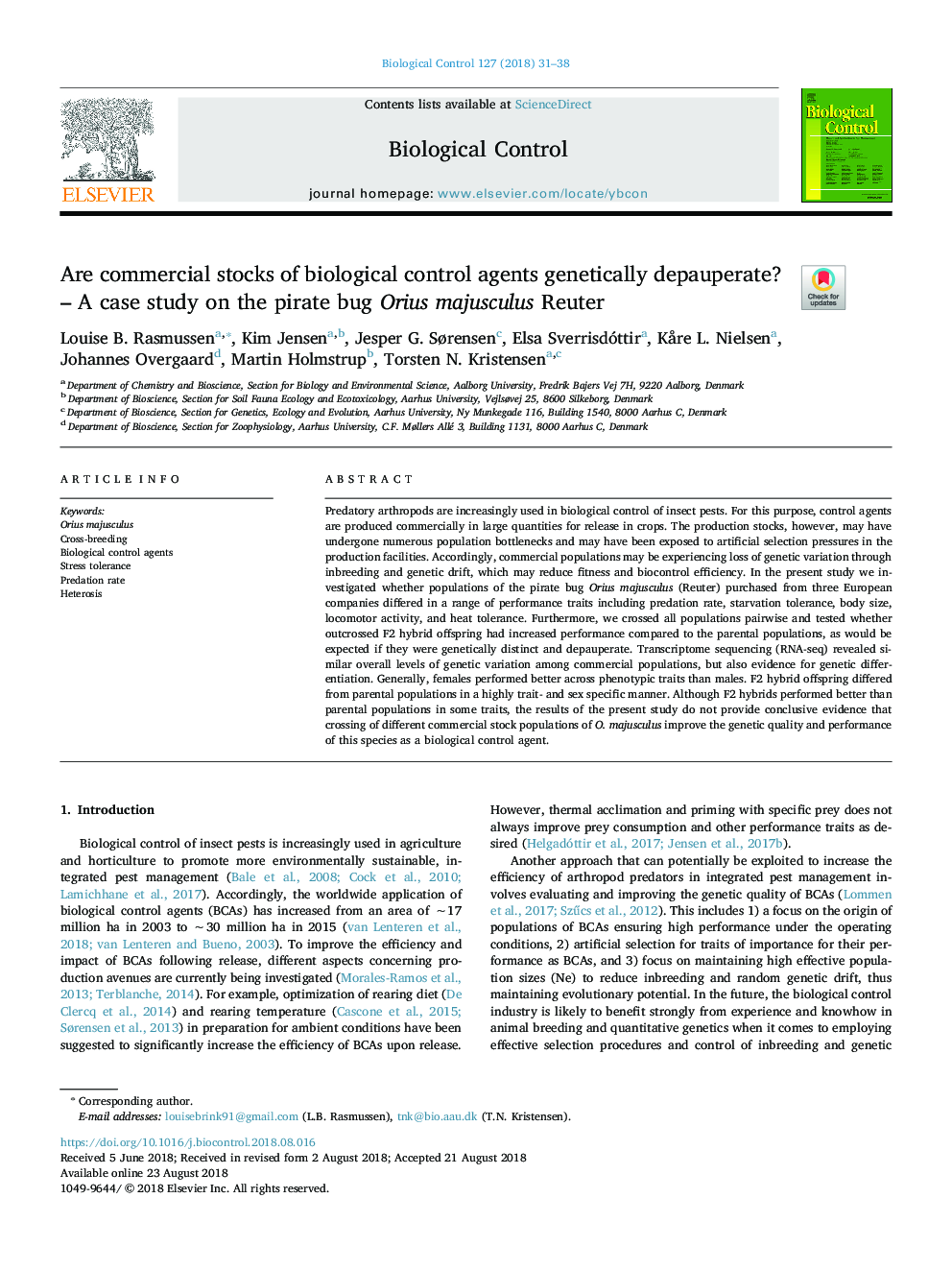| Article ID | Journal | Published Year | Pages | File Type |
|---|---|---|---|---|
| 10138705 | Biological Control | 2018 | 8 Pages |
Abstract
Predatory arthropods are increasingly used in biological control of insect pests. For this purpose, control agents are produced commercially in large quantities for release in crops. The production stocks, however, may have undergone numerous population bottlenecks and may have been exposed to artificial selection pressures in the production facilities. Accordingly, commercial populations may be experiencing loss of genetic variation through inbreeding and genetic drift, which may reduce fitness and biocontrol efficiency. In the present study we investigated whether populations of the pirate bug Orius majusculus (Reuter) purchased from three European companies differed in a range of performance traits including predation rate, starvation tolerance, body size, locomotor activity, and heat tolerance. Furthermore, we crossed all populations pairwise and tested whether outcrossed F2 hybrid offspring had increased performance compared to the parental populations, as would be expected if they were genetically distinct and depauperate. Transcriptome sequencing (RNA-seq) revealed similar overall levels of genetic variation among commercial populations, but also evidence for genetic differentiation. Generally, females performed better across phenotypic traits than males. F2 hybrid offspring differed from parental populations in a highly trait- and sex specific manner. Although F2 hybrids performed better than parental populations in some traits, the results of the present study do not provide conclusive evidence that crossing of different commercial stock populations of O. majusculus improve the genetic quality and performance of this species as a biological control agent.
Keywords
Related Topics
Life Sciences
Agricultural and Biological Sciences
Agronomy and Crop Science
Authors
Louise B. Rasmussen, Kim Jensen, Jesper G. Sørensen, Elsa Sverrisdóttir, KÃ¥re L. Nielsen, Johannes Overgaard, Martin Holmstrup, Torsten N. Kristensen,
